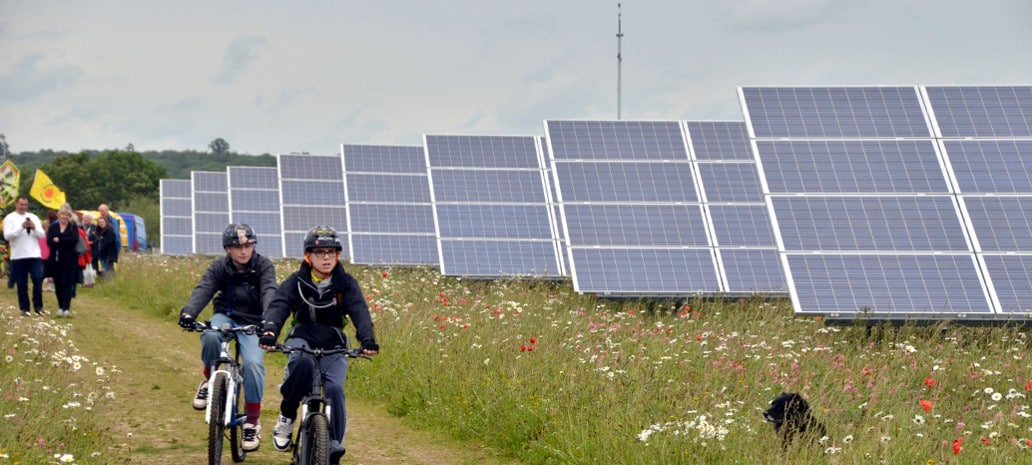The Illinois Power Agency (IPA) posted its “Draft Long-Term Renewable Resources Procurement Plan” on September 29 that describes how it will pay for solar, wind and other renewable energy projects, as well as outlining the renewable energy programs under the Future Energy Jobs Act (FEJA). The Plan is the first stand alone effort by the IPA for renewable energy, previous plans having been incorporated into overall annual procurements.
The IPA Plan incorporates FEJA to correct a long standing problem of fulfilling Illinois’ Renewable Portfolio Standard. The earlier legislation mandated percentages based on residential and small commercial retail customers of the three main electric utilities – ComEd, Ameren Illinois and MidAmerican. However, the growth of alternative retail electric suppliers and municipal aggregation programs reduced the eligible population by up to half, making attainment of RPS goals from a smaller pool much more difficult.
The legislative remedy, which now includes all customers in the three major utilities, makes the eventual goal of 25% renewable electricity, including 1.5% from solar, by 2025 much easier. In addition, the RPS goal now must be met by “forward procurements” from new projects, plus tightened requirements on qualifying projects in adjacent states that will give greater emphasis to Illinois-located systems. It should be noted that while the RPS is required only of the “big three” utility providers, qualifying renewable energy systems can also be located in Illinois rural co-op, municipal and small investor owned districts.
The Plan also shifts the pricing of the Adjustable Block Program more to an administratively determined price structure as opposed to bid competitive results. The process will also be ongoing as opposed to discrete procurement events. The Plan gives preliminary examples of SREC prices based on size (under 10kW, 10-100 kW, 100-200 kW, 200-500 kW, 500-2,000 kW), types of system (Distributive Generation or Community Solar), coverage under the low-income Illinois Solar For all Program and which utility district it is located in. For example, a 5kW distributed generation system could get $82.35 for an SREC in the Ameren or related block group, and $68.11 in the ComEd group. A 500kW community solar installation would get $21.61 in ComEd’s block or $56.06 from Ameren’s.
As stated, these price points are preliminary and would be subject to adjustments based on two sets of criteria. The first is if there is a lack of project applications. The second, and broader category, is policy considerations. The IPA stipulated in their Draft Plan that market and policy conditions could also result in changes in pricing, as well as other program considerations. The quantified example given is the decline in the Investment Tax Credit for projects starting construction in 2020, and the yet-to-be quantified example would be the impact of the Suniva-SolarWorld tariff case. There was also acknowledgement of possible problems of the legislatively “borrowed” funds from the Renewable Energy Resource Fund were to be returned within two years.
The Draft Plan included descriptions of the Community Renewable Generation Program, with an acknowledgement that most of the installations would be community solar, as well as the low-income Illinois Solar For All Program. At this juncture, the IPA details the responsibilities of the vendors (as developers are called) in the project developments. The specific processes of subscribers signing up, especially under Solar For All, have been left somewhat open for two reasons. The IPA will have the Program Administrators set the final rules on transactions and the role of community participation. Also, the agency wants to allow for flexibility and creativity to maximize community benefits and not be hobbled at the outset.
Public hearings on the Plan will be held on October 26, 3pm in Springfield, October 31, 10AM in Chicago and November 3, 3pm in Moline. The Plan has a 45 day comment period ending November 13. Afterwards, the IPA has until December 4 to revise the Draft Plan and file it with the Illinois Commerce Commission (ICC). Objections could be made to the ICC by December 18, with the Commission deciding by December 26 whether hearings are necessary. The deadline for the ICC to enter its order confirming or modifying the Plan is April 3, 2018, which would launch the programs.
One of the first orders of business would be the retaining of one or more program administrators to enable the first projects to be operative in 2018 . Developers are already at work getting projects ready to go with hundreds of megawatts of interconnection applications in the utility queues.
This content is protected by copyright and may not be reused. If you want to cooperate with us and would like to reuse some of our content, please contact: editors@pv-magazine.com.








By submitting this form you agree to pv magazine using your data for the purposes of publishing your comment.
Your personal data will only be disclosed or otherwise transmitted to third parties for the purposes of spam filtering or if this is necessary for technical maintenance of the website. Any other transfer to third parties will not take place unless this is justified on the basis of applicable data protection regulations or if pv magazine is legally obliged to do so.
You may revoke this consent at any time with effect for the future, in which case your personal data will be deleted immediately. Otherwise, your data will be deleted if pv magazine has processed your request or the purpose of data storage is fulfilled.
Further information on data privacy can be found in our Data Protection Policy.